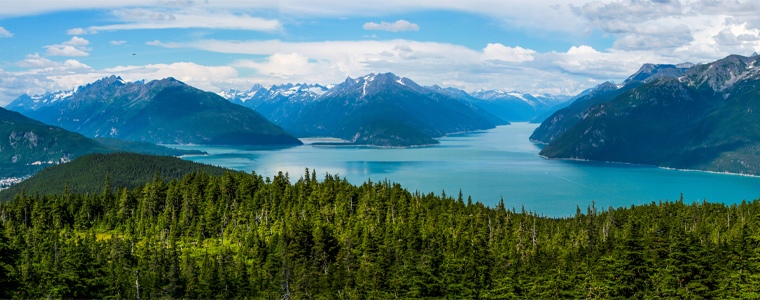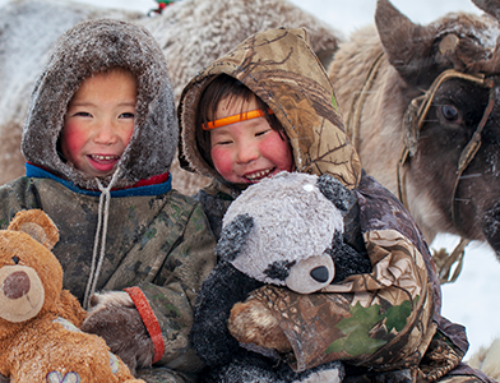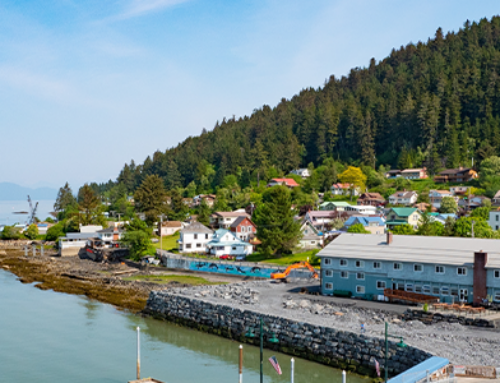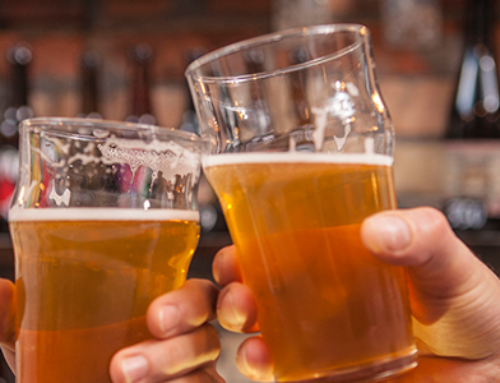Last updated: 11/5/2021
Historian Harry Ritter once wrote that Alaska is “like nowhere else—wild, extreme and amazing.”
That being said, when you’re considering a move to Alaska, you might want to know a bit more about what you’re getting into. Or, if you’re exiting Alaska for the Lower 48, you might want to understand what you’re leaving behind. To give you a better sense of how Alaska sizes up to the rest of the United States (and the world!), we’ve put together a few comparisons. Taken together, they’ll give you a new perspective on how life in the Land of the Midnight Sun stacks up.
So, How Big Is Alaska?
Alaska measures 665,384 square miles. This makes it, by far, the largest state. Below, take a look at how it compares to the other top contenders. Plus, to give you a better sense of what life in Alaska is like, we also included some figures on population and population density, which will reveal just how much space is waiting for you in Alaska.
Largest States by Total Area:
Alaska
Land area: 665,384 square milesPopulation:
731,545i
Population Density:
1.10 people/mi²
Texas
Land Area 268,596 square milesHow Much Bigger Is Alaska?
2.5 times
Population:
28,995,881 ii
Population Density:
108.0 people/mi²
California
Land Area 163,694 square milesHow Much Bigger Is Alaska?
4.1 times
Population:
39,512,223 iii
Population Density:
241.4 people/mi²
Montana
Land Area 147,039 square milesHow Much Bigger Is Alaska?
4.5 times
Population:
1,068,778 iv
Population Density:
7.3 people/mi²
New Mexico
Land Area 121,590 square milesHow Much Bigger Is Alaska?
5.5 times
Population:
2,096,829 v
Population Density:
17.2 people/mi²
Arizona
Land Area 113,990 square milesHow Much Bigger Is Alaska?
5.8 times
Population:
7,278,717 vi
Population Density:
63.9 people/mi²
To further put these stats into perspective:
- Alaska is about one-fifth the size of the entire Lower 48.
- If you combined the area of Texas, California, and Montana, it would still be less than the size of Alaska.
- East to west, Alaska measures 2,500 miles, which is just about the distance from Savannah, Georgia, to Santa Barbara, California. (Which is one of the reasons why you might want to think twice before doing a DIY Alaska move.)
In fact, Alaska is the seventh-largest country subdivision in the world. It ranks just below the State of Queensland in Australia—but consider this fact: While Queensland boasts a population just over 5 million, Alaska only has 737,438 residents. In fact, let’s take a more global perspective on Alaska’s size.
How Big Is Alaska in Comparison to Other Countries?
When you’re considering how large Alaska is in comparison to the countries of the world, you might be tempted to pull out a map and simply look.
However, this wouldn’t give you a fully accurate accounting of Alaska’s size. Why? It centers around the fact that maps are a flat, two-dimensional representation of a three-dimensional globe.
The Mercator Projection and Why It Distorts the Size of Alaska
You might be surprised to learn that the maps we use today are based on a model published way back in 1569 called the Mercator projection. The 16th century was a time of significant global exploration, and this model was designed primarily to aid in that mission. As a result, while Mercator projection maps made navigation easy, they distort the size of geographical objects far from the equator.
Greenland is a great example. Although it’s roughly similar in size to Saudi Arabia, it certainly doesn’t look that way on a Mercator projection map.vii
So what does this mean for Alaska? Because it’s far from the equator, Alaska looks much larger than Mexico. However, they’re about the same size!
What’s the best way to understand how big Alaska really is? Try out a fascinating app called The True Size. You’ll be able to drag the outline of Alaska all over the world. The app automatically adjusts the size of the state proportionally as you navigate.
Russia
Land Area: 6,323,482 mi²
Population: 144,104,080 viii
Population Density: 22.8 people/mi2
China
Land Area: 3,600,950 mi²
Population: 1,402,112,000 ix
Population Density: 389.4 people/mi2
Canada
Land Area: 3,511,023 mi²
Population: 38,005,238 x
Population Density: 10.8 people/mi2
Brazil
Land Area: 3,266,584 mi²
Population: 212,559,409 xi
Population Density: 65.1 people/mi2
Australia
Land Area: 2,947,336 mi²
Population: 25,687,041 xii
Population Density: 8.7 people/mi2
Lower 48
Land Area: 3,119,884 mi²
Population: 328,571,074 (2020 Census)
Population Density: 111.04 people/mi2
Now that you know how Alaska stacks up to the biggest countries in the world, let’s talk about one more distinction.
What About Water vs. Land Area?
Interestingly enough, when you look at the United States in terms of the bodies of water within state boundaries, you’ll discover some new names in the top five largest states:
States with Largest Water Area:
- Alaska – 94,743 mi2
- Michigan – 40,174 mi2
- Florida – 12,132 mi2
- Wisconsin – 11,338 mi2
- Louisiana – 9,174 mi2
You’ll notice, however, that Alaska still tops the list. Whether you’re looking at water, land, or total combined area, Alaska is #1 in every category. Even Michigan’s Great Lakes can’t compete, square-footage-wise with Alaska’s more than 3,000 rivers and 3 million lakes. In fact, the Yukon River, which starts in British Columbia and flows through Alaska into the Bering Sea, is the third-longest river in the United States.
Even When It Comes to Coastline Alone, Alaska Is Pretty Impressive!
Clocking in at 6,640 miles, Alaska’s coastline is pretty impressive. In fact, the U.S. Census measures the coastline of the entire U.S. at 12,383 miles. In other words, the state of Alaska alone makes up half of the U.S. coastline. That’s a pretty impressive number! xiii
How Many People Live in Alaska?
As we hinted when comparing Alaska to the Australian state of Queensland, the population density is low in the Frontier State—the lowest of all the states, with a density of 1.1 people per square mile.
To give you some contrast, check out these statistics from other regions of the U.S.:
To help us visualize the true size of Alaska, we used the True Size tool to compare Alaska by miles² to other areas of the globe. Let’s take a look:
Imagine a square parcel of land that measures a mile on each side. Visualize 1.3 people in it—or even two people—and then think about what that same piece of land would look like with 10,859 people in it.
That visual will give you a feel for just how much land Alaska has to offer—and how few people occupy it. That being said, people in Alaska obviously aren’t spread out evenly. Instead, many can be found in Alaska’s cities and towns.
How Big Are Alaska’s Biggest Cities?
Some people move to Alaska for the off-the-grid lifestyle. Others simply want to enjoy quiet, open acreage with few other people around. For those who crave company, there’s Alaska’s largest city, Anchorage, with a population of288,970.xiv
If you’ve never lived in a city that size, know that it’s the 68th largest city in the United States. It’s just a little smaller, population-wise, than Cincinnati, Ohio and just a little larger than St. Louis, Missouri.
If Anchorage sounds too crowded, you might want to choose a different spot in Alaska, such as the next-largest city, Fairbanks. Its population of 30,917xv makes it the 1,002nd–largest city in the U.S.
To put it into perspective, Fairbanks shares a similar population with these three U.S. cities:
- Manassas, VA (35,205)
- Lewiston, ME (35,131)
- San Juan Capistrano, CA (34,793)
Now when you’re choosing where you want to live in Alaska, you might also want to consider how difficult or easy it will be to get yourself home.
What About Roadways in Alaska?
You might have heard that Alaskans like to get creative with getting around: planes, ferry boats, snow machines (you might know them as snowmobiles), and even dog sleds are common forms of transportation in the Frontier State.
This is probably partially due to the Alaskan “can do” attitude—and the fact that there are only 14,336 miles of public roads in Alaska, which puts it well behind the other largest states, as you can see in this chart:
Miles of Public Roads:
- Alaska: 14,336
- Texas: 679,917
- California: 394,383
- Montana: 150,257
- New Mexico: 161,015
- Delaware: 14,069 xvi
(You’ll notice that, in terms of mileage of public roads, Alaska has around as many as the state of Delaware, the second-smallest state in the U.S.!) That being said, you’ll want to master the state’s various modes of transportation because there are plenty of extraordinary sites to see.
What Makes Alaska So Different from Other States?
A lot of things—and the answer will be different, depending on who you ask. This list of the top nine reasons to move to Alaska is a great start. In addition, we’d like to highlight two features of Alaska that make it stand out from the rest of the country. Alaska is home to twelve of the thirteen highest mountain peaks in the United States, including the highest, Denali (formerly known as Mt. McKinley):
Highest Major Summits in the United States
- Denali: 20,310 ft. (AK)
- Mount Saint Elias: 18,009 ft. (AK & Canada’s Yukon)
- Mount Foraker: 17,400 ft. (AK)
- Mount Bona: 16,550 ft. (AK)
- Mount Blackburn: 16,390 ft. (AK)
- Mount Sanford: 16,237 ft. (AK)
- Mount Fairweather: 15,325 ft. (AK & British Columbia)
- Mount Hubbard: 14,951 ft. (AK & Canada’s Yukon)
- Mount Bear: 14,831 ft. (AK)
- Mount Hunter: 14,573 ft. (AK)
- Mount Whitney: 14,505 ft. (California)
- Mount Alverstone: 14,500 ft. (AK & Canada’s Yukon)
- University Peak: 14,470 ft. (AK)xvii
In addition to breathtaking mountain peaks, Alaska also hosts the second-most national parks in the United States. The top spot goes to California, which has nine parks. Alaska is right behind with eight.
That being said, if you’re measuring by acreage, Alaska wins, hands-down. The state has devoted 32,526,051 acres to National Park Land, while California only has 6,313,164. Additionally, you’ll find the largest National Park in Alaska: the 8.3 million-acre Wrangell-St. Elias National Park and Preserve.
To sum it up, you won’t find a lot of big cities, people, or roadways in Alaska, but you will find plentiful land that’s just waiting to be explored in Alaska’s five regions.
Discover the 5 Distinct Regions of Alaska
As you explore Alaska’s five regions, you’ll discover that life can be radically different in each. Your experience in Juneau in the rainy Southeastern region will stand in dramatic contrast to life in urban Anchorage in Southcentral Alaska. For a full review of each area, check out our blog “The Best Places to Live in Alaska”
To give you a better sense of what each region is like, here’s a quick run-down of all five:
- Southcentral Alaska – Plenty of roads and access to Alaska’s largest city, Anchorage, make this one of the most convenient places to live in Alaska. Plus, there’s plenty of Alaska’s natural beauty to enjoy in the area, including the sights within Kenai Fjords National Park, Wrangell-St. Elias National Park, and the Chugach National Forest. If it’s a popularity contest, Southcentral Alaska wins far and away: 40% of Alaska’s population lives in Anchorage and 54% live in the broader Anchorage/Mat-Su Economic Region.xviii
- Southeast Alaska – Also known as the Inside Passage, the terrain in Southeast Alaska is largely made up of islands and mountains. And while you’ll enjoy milder winters (relatively; this is still Alaska, after all), this stunning region gets wet weather nearly year-round. You’ll find very few roads in the area, so transportation is largely via boat and airplane.
- Southwest Alaska – Much of the population in Southwest Alaska is concentrated in the Kodiak Island Borough. Additionally, you’ll find a significant Native population in the area. 27% of residents identify as American Indian or Alaska Native,xix and the Yup’ik and Aleut communities have a significant presence in Southwest Alaska. The region is not connected by roads, so living in this area means navigating by airplane and boat.
- Interior Alaska – Fairbanks is one of the big hubs in this region, which is also home to the University of Alaska Fairbanks. There’s also a significant military population in the interior, with personnel stationed at Clear Air Force Station Base in Denali Borough, Fort Wainwright or Fort Greely Army Bases in Fairbanks, or Eielson Air Force Base in North Pole.
- Far North Alaska – The television show Ice Road Truckers made the highway that traverses this region famous. Extreme weather and extreme darkness in the heart of winter make this a challenging place to live, although the Inupiat people still live in more than 30 villages in the region.
For more details, check out our article on the best places to live in Alaska’s five regions.
Getting a Clearer Picture of the Frontier State
Now that we’ve taken you on a tour of some of the more prominent features of the Frontier State—and how they compare to those of the other United States—you might have a better sense of what makes Alaska so unique. Whether that inspires you to head for the Land of the Midnight Sun, pack up for the Lower 48 or stay right where you are—well, that’s up to you.
However, if you’re moving to, from or around Alaska, we’d be happy to help. Our Anchorage-based team has extensive experience moving to even the remotest parts of the state. Just get in touch with us for a quote. We’d be happy to help you find your home in the largest state in the Union.
Tell us about your move!
 (907) 868-4756
(907) 868-4756


